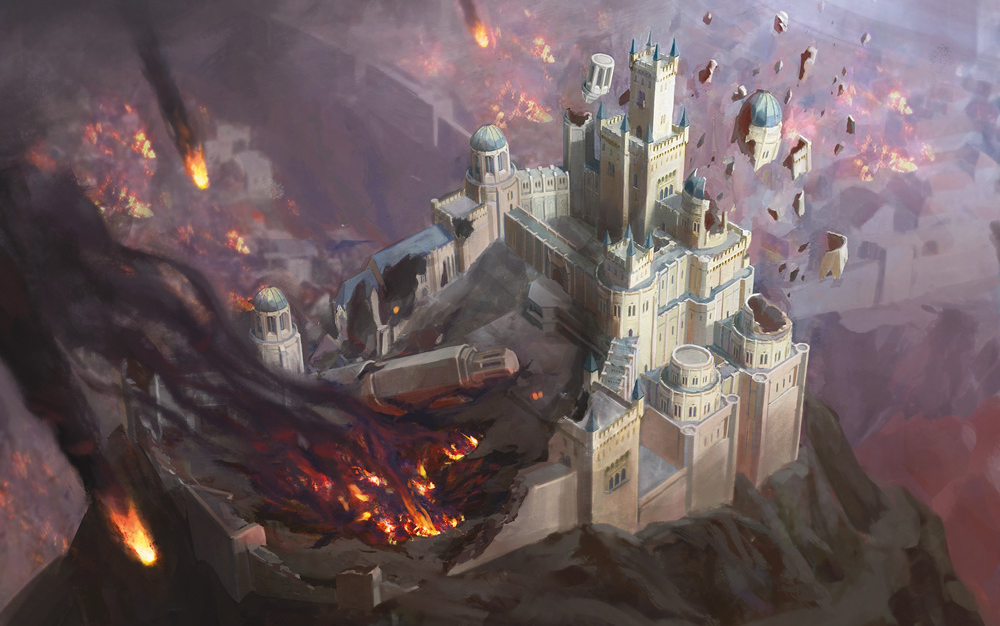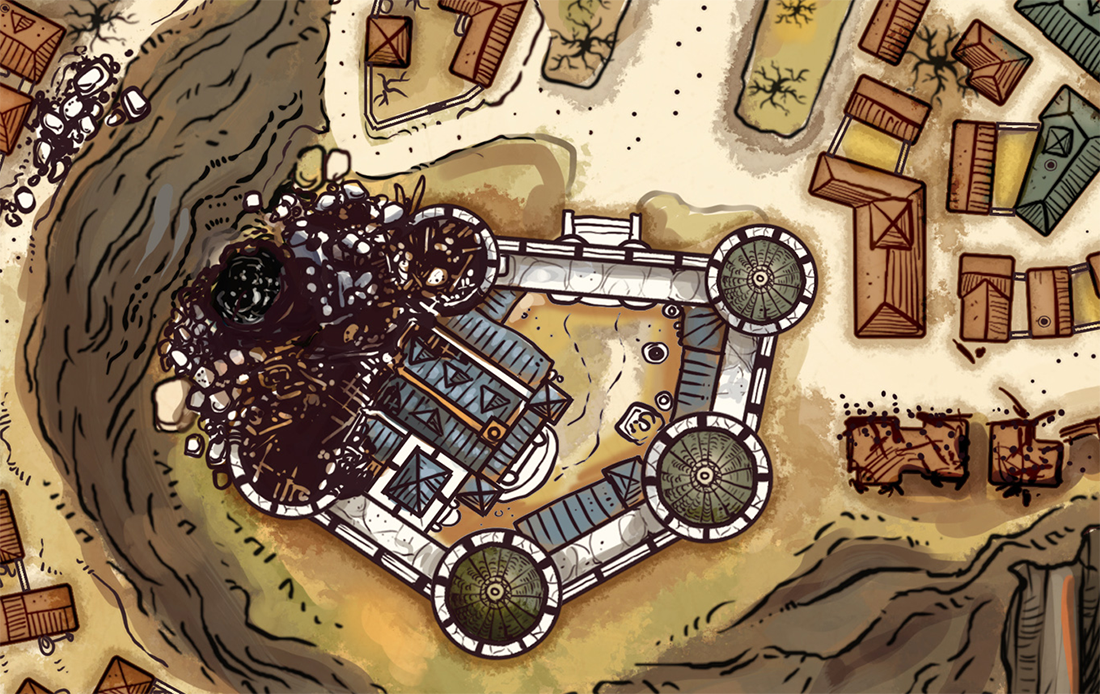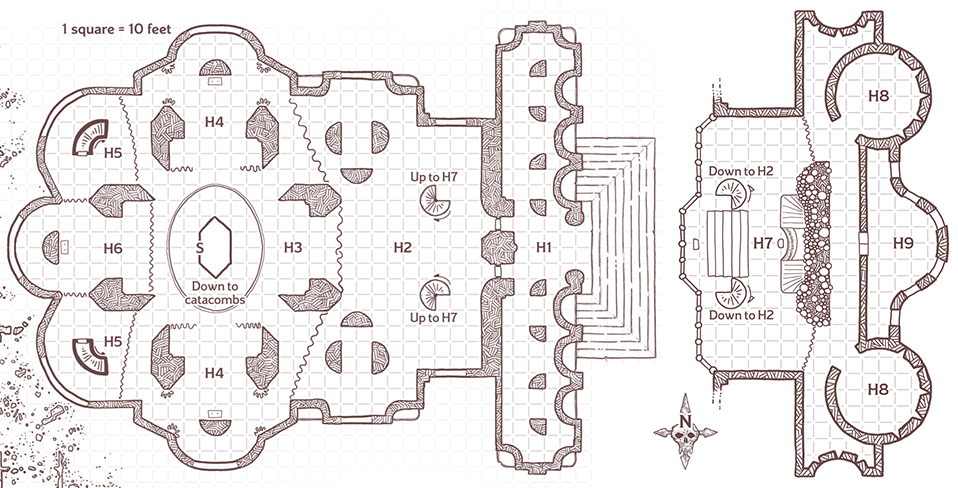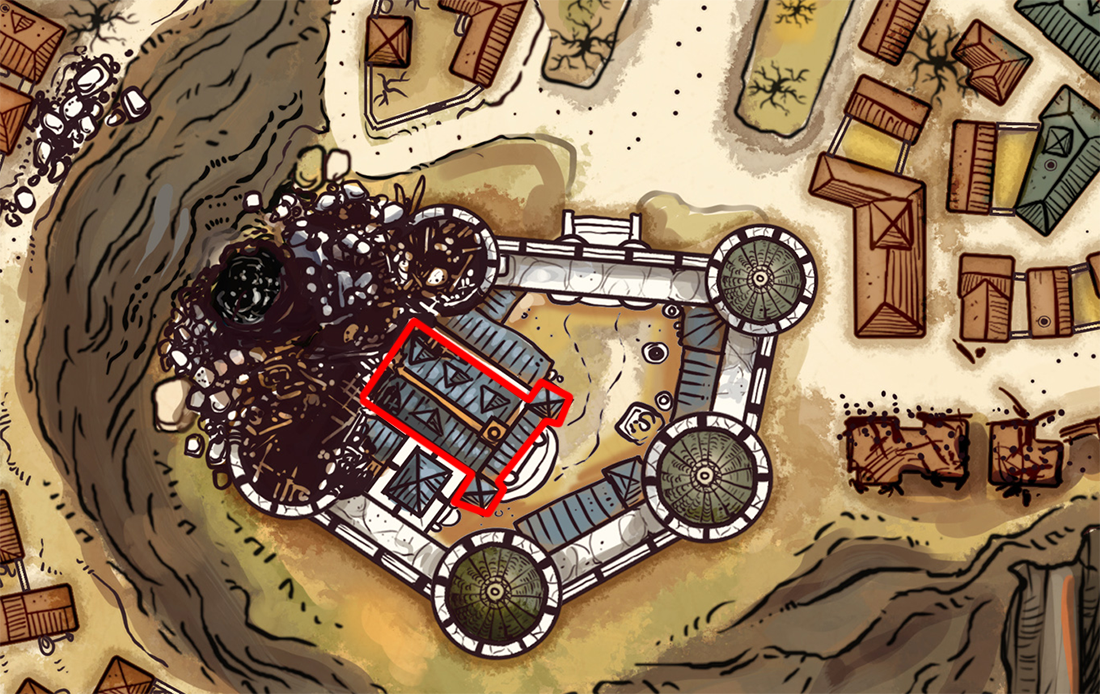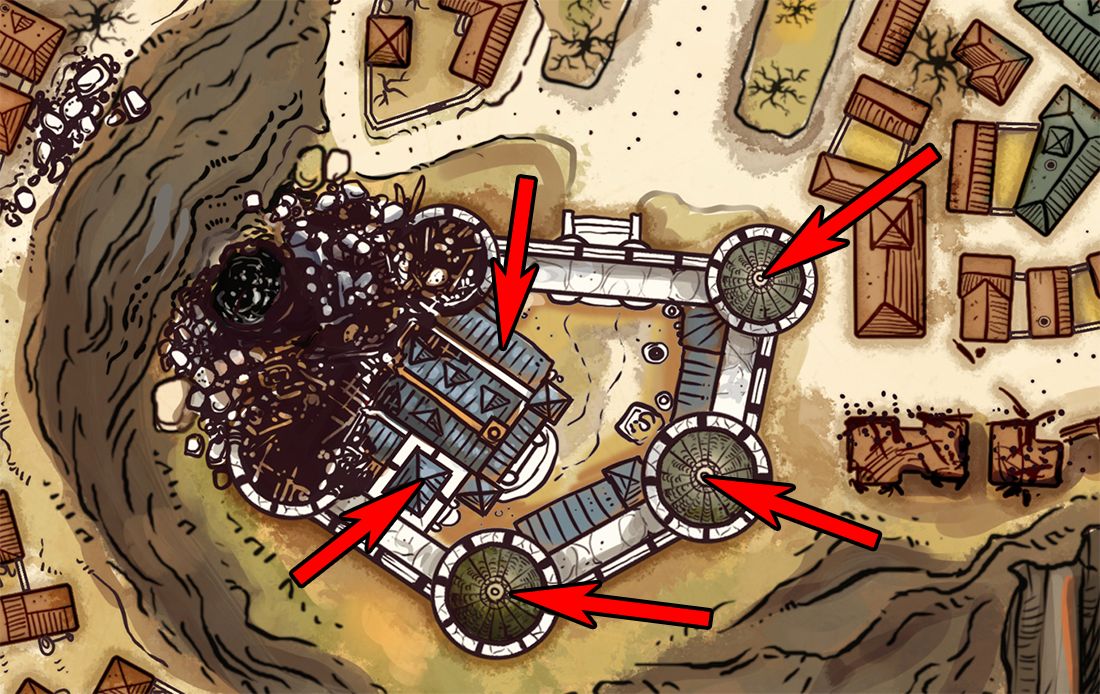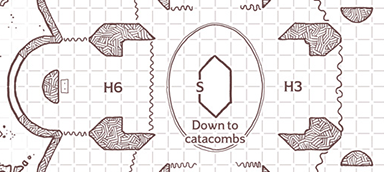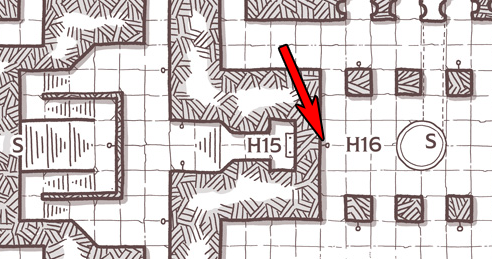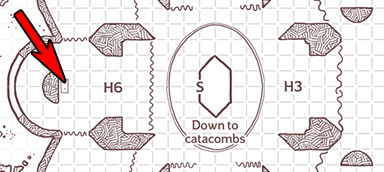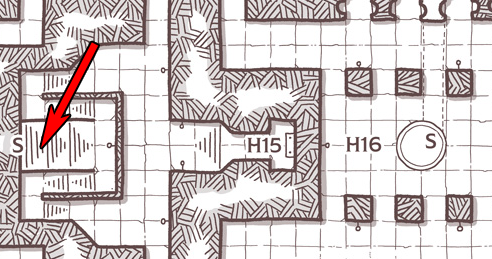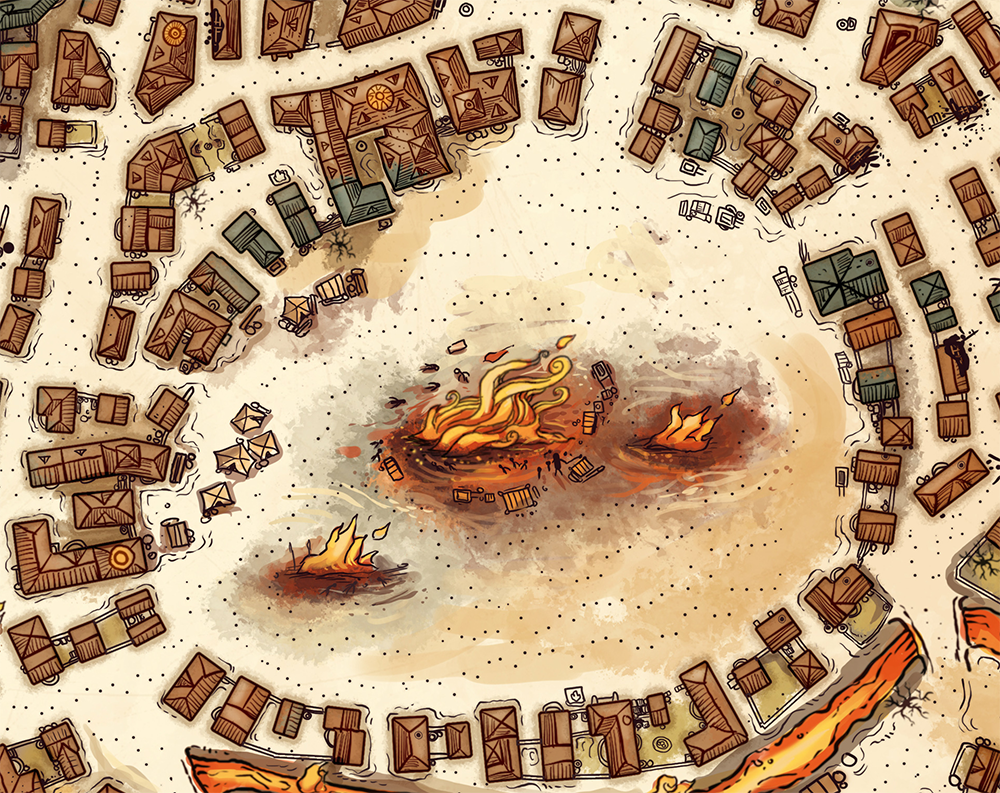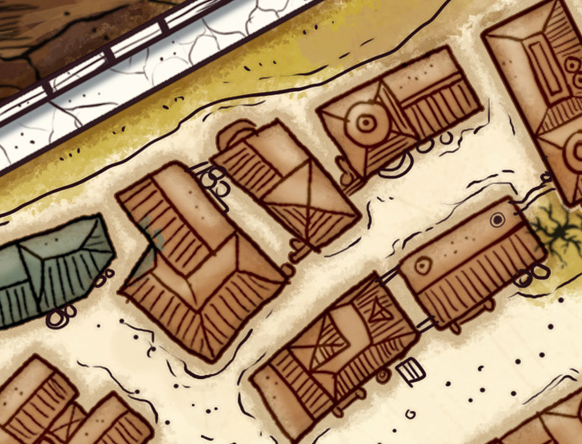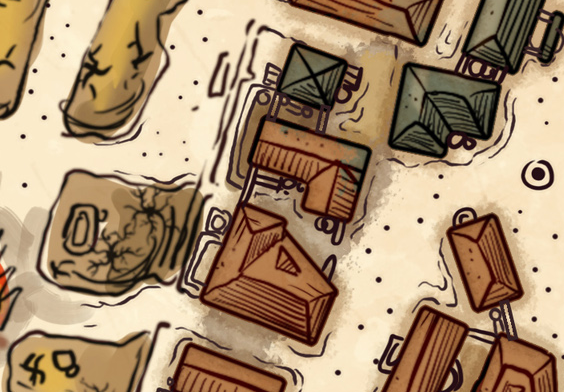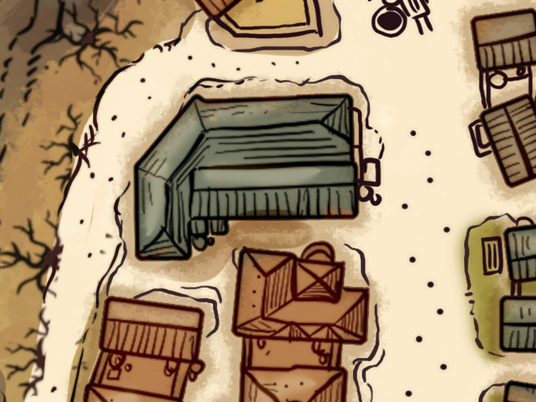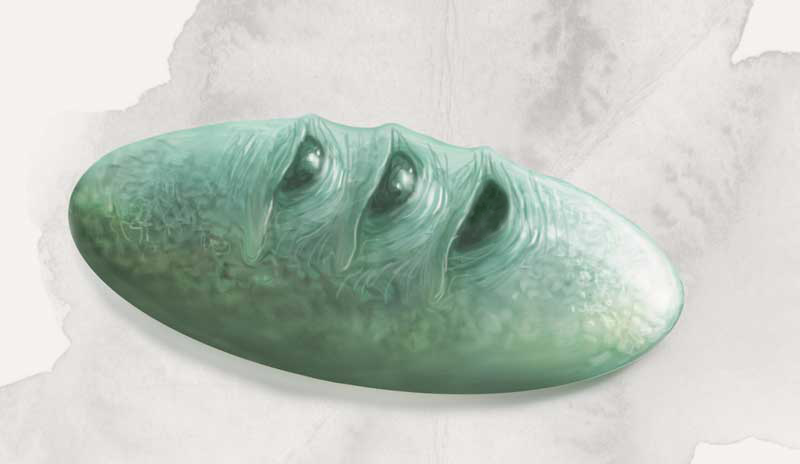
The first sanity mechanics appear in Call of Cthulhu in 1981 and, in many ways, it remains the definitive mechanical model: The character is confronted by something unnatural, stressful, or terrifying. They make a check using their Sanity attribute. If the check succeeds, everything is fine. If the check fails, they take damage to their Sanity attribute based on the severity of the event that triggered the check. If the damage is sufficiently large (either immediately or in aggregate), they suffer some form of temporary or indefinite insanity. These insanities often force a particular action on the character (fainting, fleeing in panic, physical hysterics, etc.).
We can identify three distinct elements in these mechanics:
- The trigger which requires a sanity check.
- The check to see if the trigger causes harm to the character’s sanity.
- The reaction of the character to the trigger (usually due to a failed check).
This is a fortune at the beginning mechanic: You make the sanity check and THEN determine what your character does based on the outcome of the check. It is also a reactive mechanic, by which we mean that it is used in response to a triggering circumstance rather than resolving a statement of intention.
(Thought experiment: What would a non-reactive sanity check look like? It would probably be part of a wider array of personality mechanics which the player could use to interrogate their character’s state of a mind; a very non-traditional form of player expertise activating character expertise, with the player essentially “asking” their character whether they’re scared or aroused by Lady Chatworth or tempted by the devil’s offer. But I digress.)
RESOLUTION SEQUENCE
In my experience, most GMs resolve sanity checks in the same sequence listed above: they describe the trigger, make the check, and then determine the reaction.
GM: A tentacular thing comes slithering out of the closet! Make a sanity check!
Player: (rolls dice) I failed!
GM: You take (rolls dice) 3 points of Sanity loss! What do you do?
Player: Bertram screams and runs out of the room!
In this, they are usually mirroring how the mechanic is described in the rulebook: this is what this rule is for (the trigger), here is how the mechanic works (the check), and here is the outcome of the mechanic (the reaction).
This all makes sense.
But in my experience, it’s not the most effective way to run sanity checks. Instead, you usually want to invert the check and trigger, like so:
Player: Bertram very carefully turns the handle and eases open the closet door.
GM: You peer into the closet… There’s… Yes! There’s something moving in there! Give me a sanity check!
Player: (rolls dice) I fail!
GM: A tentacular thing comes slithering out of the closet! You take 3 points of Sanity loss! What do you do?
Player: Bertram screams and runs out of the room!
It’s a subtle distinction. What difference does it make?
First, the mechanical resolution now functions as foreshadowing: While the check is being made, tension builds at the table as the players anticipate whatever horrific thing might be triggering the check. (What’s in the closet?!)
Second, by resolving the check before describing the trigger, you allow the players to have an immediate, immersive response to your description of the trigger.
Which makes sense, right? When Bertram sees the tentacular thing he immediately wants to scream and run in terror. He doesn’t want to wait a minute while dice are being rolled.
So, in short, you heighten the emotional engagement of the moment both coming and going.
In my experience, the exception to this is when the trigger for the sanity check is generated by a different mechanical interaction. (For example, watching your friend’s brains get sprayed across the wall by a sniper’s bullet.) This is more a matter of practicality than effectiveness (unlike the tentacular horror slithering out of the closet, the GM doesn’t know whether or not the bullet will hit their friend until it does, and the whole table often learns that simultaneously), but does serve as a reminder that the “proper” ruling in an RPG is rarely a simple black-and-white affair.
TRAIL OF CTHULHU – LIMITS OF SANITY
In Call of Cthulhu, PCs start with a fairly large amount of Sanity and usually lose fairly small quantities in each session of play. There’s generally no way to recover lost Sanity, so over the course of a campaign, their Sanity is slowly eroded away by the horrors which they’ve seen, until finally the last few points are taken away and they are left permanently mad and broken by their experiences.
This is very effective at evoking the slow, inexorable destruction of Lovecraftian fiction. But, like hit points in D&D, you generally don’t feel actual risk until near the end of the process. There are some mitigating factors, but this can easily have the effect of reducing the impact of Sanity losses.
In Trail of Cthulhu, Kenneth Hite does a very clever tweak on this system by splitting it into two separate tracks: Sanity and Stability.
As in Call of Cthulhu, Sanity generally can’t be restored once lost. However, you also don’t lose it directly. Instead, you usually only lose Sanity as a result of your Stability meter hitting 0.
The Stability meter CAN be restored when depleted, but it’s limited enough that it can easily be wiped out in a single session (which would result in Sanity getting hit).
This allows the system to create a mechanical sense of risk that builds over the course of each session (as Stability is depleted), while ALSO capturing the long, slow, inexorable, and irreversible destruction of a character’s psyche (as Sanity is depleted). It allows characters to brush up against madness without being permanently broken.
If you’re a Call of Cthulhu GM coming to Trail of Cthulhu for the first time, you’ll want to consider how the hard limits in each system are different. This will affect both scenario design and the pacing of individual sessions. In some ways Trail of Cthulhu is more forgiving (because Sanity is “shielded” behind Stability), but in other ways it is considerably less forgiving (because it’s relatively easy to completely blast through Stability in a single session).
The game is fairly well-tuned so that in a typical scenario some or all of the PCs are likely to feel the risk of running out of Stability, but it won’t actually happen in every single session. (Which is also good, because if it’s getting hammered so hard that it IS happening like clockwork every single session, that also deflates tension.) But this is something you’ll want to monitor and adjust in your scenario design and rulings: If their Stability is rarely or never at risk of running out, check to see if you’re not calling for Stability tests as often as you should. If their Stability is being sand-blasted away, see what you can tweak to get a more balanced result.
UNKNOWN ARMIES – A MULTITUDE OF MADNESS
Unknown Armies by John Tynes and Greg Stolze has several more features in its sanity system (which, in the first edition, was called the madness meter and was resolved using stress checks).
First, instead of having a single track, the system has five separate meters, one for each type of psychological stress the character might experience:
- Helplessness (unable to take action you feel is necessary)
- Isolation (when you’re cut off from society or loved ones)
- Violence (pain, injury, death)
- Unnatural (challenges to your perception of reality)
- Self (violations of your deepest beliefs)
This paints a more evocative picture of a character’s psychological state. It also allows the game to track separate effects for each type of trauma, while still measuring overall psychological stability across all the meters.
Having these separate meters also allows Unknown Armies characters to become hardened: Each stress check adds a hardened notch to the associated meter. Each trigger is rated by its severity, and if a character has a number of hardened notches in a meter equal to or higher than the rating of the trigger, then they don’t need to make the stress check. (They’ve seen so much Violence, for example, that someone being punched in the face no longer has a psychological impact on them.)
Systems that harden you against tests can suffer from a “plateau effect” where you reach a certain level equivalent to whatever style of play you prefer and then stop rolling checks (see Katanas & Trenchcoats). This also happens in Unknown Armies, but it sidesteps the problem by having the five different meters: You can plateau in one, but the character will remain vulnerable in the other meters (and realistically can’t plateau in all of them because there are cumulative psychological consequences based on the total number of hardened notches the character has).
Unknown Armies also does something interesting with the reaction phase of the resolution: If the PC fails a stress check, they have to choose fight, flight, or freeze – in other words, is the character’s reaction to furiously attack the source of psychological stress, flee from it in a panic, or simply lock-up in indecision, terror, or a “deer-in-headlights” effect.
The cool thing about this mechanic is that, although the failed check constrains the available options, the player still remains in control of their character. Conversely, even succeeding on the check gives a roleplaying cue (because becoming psychologically hardened is meaningful) that the player can pick up and run with.
SANITY CHECKS FOR NPCs
Something which many games with sanity mechanics miss (and which, in my experience, many GMs ignore even in the games which do include support for it) is to also make sanity checks for the NPCs.
If you aren’t already doing this, it’s well worth exploring. It can really push the narrative in cool and unexpected directions.
It can also emphasize how dangerous and unusual the PCs’ lives are (and, therefore, how extraordinary and meaningful their actions are). It can also remind them why they need to be the ones to solve the problem and that it may be a very, very bad idea to call in people who aren’t prepared to deal with it.
On that note, remember that NPCs will generally only have a fraction of the screen time that the PCs do, and, therefore, will only have a fraction of the opportunities to make sanity checks. Don’t load ‘em all up with the default maximum Sanity ratings for starting PCs. Seed in a broad range of Sanity ratings, from those who are fairly robust (at least to begin with) to those who are already psychologically unsound.
A DIGRESSION ON MYTHOS MADNESS
So it turns out that there are aliens. And some of them have visited Earth. Maybe they’ve even been involved in genetically engineering human beings.
… why is this driving me insane again?
As Unknown Armies demonstrates, sanity mechanics are not ineluctably linked to the Mythos. But they did originate there, and so pervasive is the influence of Call of Cthulhu that any Mythos-based game seems almost incomplete without them. So this feels like an appropriate time for a brief digression on why Mythos-inspired madness exists.
Partly this is just cultural dissonance: At the time Lovecraft was writing, these things were not part of pop culture, so it was possible to believe that people would find their existence unsettling to their settled views of the way the world worked. The understanding of how insanity worked was also different in some key ways. And, of course, Lovecraft was a huge racist and had a plethora of mental issues himself, so there is some projection of his own preexisting mental infirmities into the mental state of his characters.
So, to a certain extent, it’s like wondering why women faint all the time in Victorian literature.
On the other hand, there’s a bit more to it in terms of the time when the “Stars Are Right,” which suggests a fundamental reordering of the laws of the physical universe. The creatures of the Mythos literally belong to a universe incompatible with the universe we think we live in. To put it another way: We live in a little tiny pocket of abnormality which uniquely makes it possible for human life and consciousness to exist and/or prosper. The idea that at some point the Earth will leave our zone of grace, the stars will right themselves, and our little epoch of abnormality will come to an end can be rather unsettling in a way that “there are aliens” isn’t.
But more than that: The creatures of the Mythos are a living connection to the way the universe is supposed to work… and the way the universe is supposed to work is inimical to humanity. At extreme levels it can be like trying to run COBOL programming through a C++ compiler. At lower levels it’s more like trying to run a program through a buggy emulator. It’s not just “that monster is kind of creepy,” it’s “that monster has connected my brain to a place where my brain doesn’t work right.” (This idea also works in reverse: Mythos creatures are operating in a semi-insane state within this period of abnormality. That’s why Cthulhu is lying in an induced coma below R’lyeh… he’s trying to minimize the damage.)
But even more than that: The damage being done to your mind is actually a direct result of the mind desperately trying to rewrite itself to cope with the true nature of reality. Mythos-induced insanity? That’s not the mind breaking. That’s the mind trying to fix itself. It just looks like insanity to us because we’re all broken.
Back to the Art of Rulings – NEXT: Traps
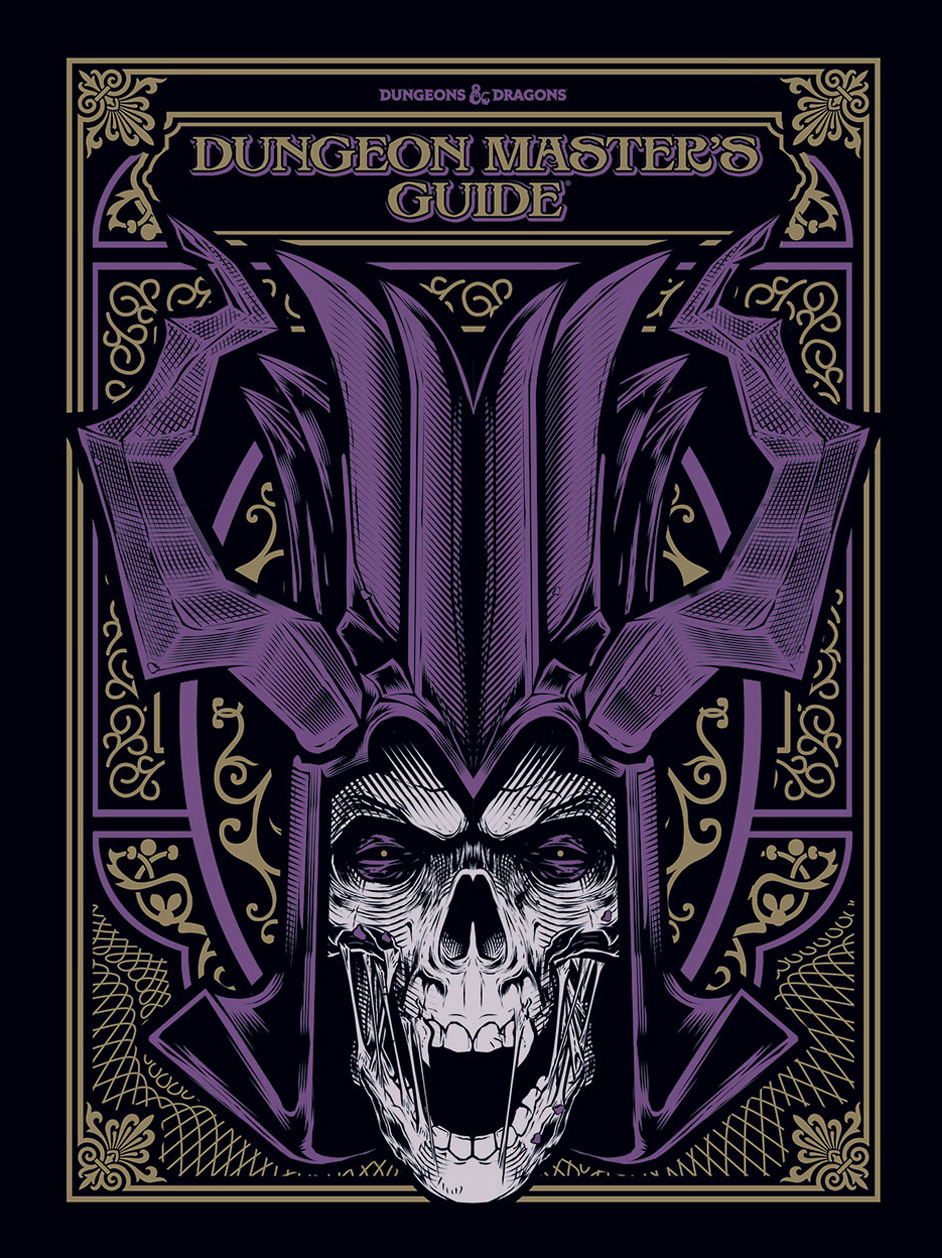 Sometimes you want to use your weapon or your martial arts skill to do something more than just lethally incapacitate a target. For example, maybe you want to knock the White Witch’s wand out of her hands. Or shoot a fleeing nobleman in the leg to slow them down.
Sometimes you want to use your weapon or your martial arts skill to do something more than just lethally incapacitate a target. For example, maybe you want to knock the White Witch’s wand out of her hands. Or shoot a fleeing nobleman in the leg to slow them down.
